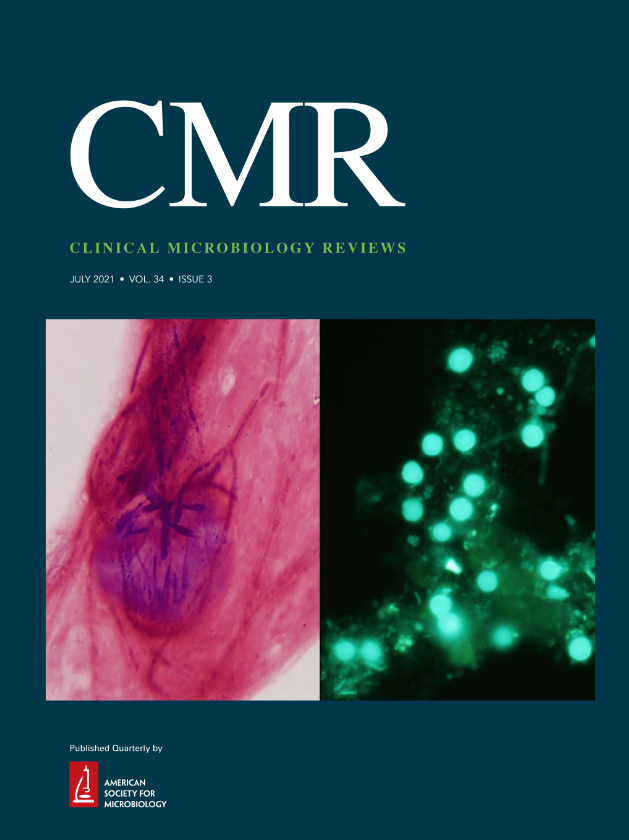The American Society for Microbiology collaboration with the CDC Laboratory Medicine Best Practices initiative for evidence-based laboratory medicine.
IF 19.3
1区 医学
Q1 MICROBIOLOGY
引用次数: 0
Abstract
SUMMARYClinical medicine has embraced the use of evidence for patient treatment decisions; however, the evaluation strategy for evidence in laboratory medicine practices has lagged. It was not until the end of the 20th century that the Institute of Medicine (IOM), now the National Academy of Medicine, and the Centers for Disease Control and Prevention, Division of Laboratory Systems (CDC DLS), focused on laboratory tests and how testing processes can be designed to benefit patient care. In collaboration with CDC DLS, the American Society for Microbiology (ASM) used an evidence review method developed by the CDC DLS to develop a program for creating laboratory testing guidelines and practices. The CDC DLS method is called the Laboratory Medicine Best Practices (LMBP) initiative and uses the A-6 cycle method. Adaptations made by ASM are called Evidence-based Laboratory Medicine Practice Guidelines (EBLMPG). This review details how the ASM Systematic Review (SR) Processes were developed and executed collaboratively with CDC's DLS. The review also describes the ASM transition from LMBP to the organization's current EBLMPG, maintaining a commitment to working with agencies in the U.S. Department of Health and Human Services and other partners to ensure that EBLMPG evidence is readily understood and consistently used.美国微生物学会与疾病预防控制中心实验室医学最佳实践倡议合作,开展循证实验室医学研究。
摘要 临床医学已将证据用于患者的治疗决策;然而,实验室医学实践中的证据评估策略却一直滞后。直到 20 世纪末,美国医学研究所(IOM)(现为美国国家医学科学院)和美国疾病控制与预防中心实验室系统部(CDC DLS)才开始关注实验室检验以及如何设计检验流程以利于患者治疗。美国微生物学会(ASM)与 CDC DLS 合作,使用 CDC DLS 开发的证据审查方法来制定实验室检测指南和实践方案。CDC DLS 的方法被称为实验室医学最佳实践(LMBP)计划,采用 A-6 循环方法。ASM 所做的调整被称为循证实验室医学实践指南 (EBLMPG)。本综述详细介绍了 ASM 系统性综述 (SR) 流程是如何与 CDC 的 DLS 合作开发和执行的。本综述还介绍了 ASM 从 LMBP 向该组织当前的 EBLMPG 过渡的情况,并继续致力于与美国卫生与公众服务部的各机构及其他合作伙伴合作,以确保 EBLMPG 的证据易于理解并得到一致使用。
本文章由计算机程序翻译,如有差异,请以英文原文为准。
求助全文
约1分钟内获得全文
求助全文
来源期刊

Clinical Microbiology Reviews
医学-微生物学
CiteScore
54.20
自引率
0.50%
发文量
38
期刊介绍:
Clinical Microbiology Reviews (CMR) is a journal that primarily focuses on clinical microbiology and immunology.It aims to provide readers with up-to-date information on the latest developments in these fields.CMR also presents the current state of knowledge in clinical microbiology and immunology.Additionally, the journal offers balanced and thought-provoking perspectives on controversial issues in these areas.
 求助内容:
求助内容: 应助结果提醒方式:
应助结果提醒方式:


